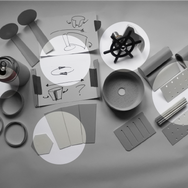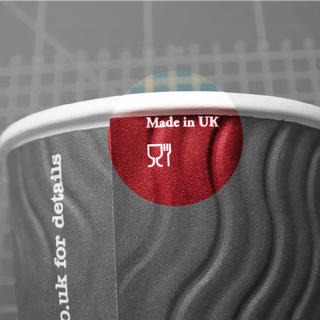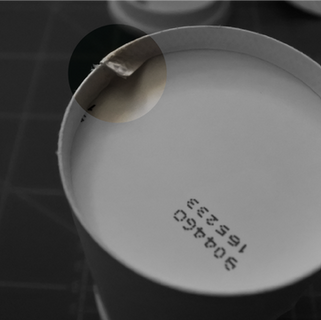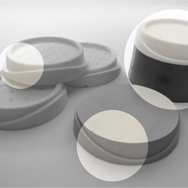Coffee to Go
3rd Year Major Project

Setting the scene
To end my second year of study, we were tasked to start considering what area we would like to investigate for our final year major projects.
During the holiday I noticed a rising environmental concern with disposable coffee cups. Being an avid coffee and tea drinker (sometimes frequenting coffee shops multiple times a day!), I felt that this was something which I was contributing to and felt the desire to try to understand and tackle the issue.

Initial thoughts
At the beginning of my major project, I felt that there were two main areas which I wanted to investigate:
• What makes the disposable coffee cup so damaging to the environment.
• Existing alternatives (including whether they are in circulation, and why they may not be as widely adopted).
I also wanted to undertake first hand research through watching consumers purchasing beverages from coffee shops. I felt that this could highlight areas where I needed to widen my understanding of the subject matter.
This would begin my research.

Research
The research began with a trip to the nearest Costa coffee chain to purchase a coffee. I then dissected the cup to assess the construction methods and materials used.
Traditional disposable coffee cups use layers of card with a cavity between to insulate the drink, keeping the liquid warm whilst preventing the user from being burnt.
The card is glued together to hold the coffee cup shape and is waterproofed through lining the inner of the cup with polyethylene.
This lining makes the coffee cup difficult to recycle. There are currently only 5 plants in the UK with the capability to separate the two materials.
The lids are constructed by vacuum forming polystyrene. The lid is made from a single material and is therefore easy to process at recycling plants.

Findings
My research showed that alternatives to polyethylene lined disposable cups were available. However, wax coated and biodegradable alternatives have failed to be adopted. This is likely due to the increased cost per cup. Ultimately, this would raise the cost for the consumer.
At the time of writing this, discounts have been introduced to consumers who use reusable cups when purchasing their coffee. I have purchased and used a range of reusable cups to understand what the consumer experiences when taking advantage of this service.
A major issue with using a reusable cup becomes apparent when returning for multiple beverages. Each time the barista will be required to rinse the cup to remove residue from the previous drink, taking time away from producing beverages. This time adds up and ultimately reduces the number of customers which can be served, potentially reducing revenue for the coffee shop.
This act of asking the barista to rinse out their reusable cup was at times...awkward. I felt like I was inconveniencing the staff by adding yet another task for the baristas to undertake whilst working their shift. If unable to rinse out the cup at facilities before returning to the coffee shop, this encounter is inevitable. People suffering from anxiety could be potentially deterred from purchasing multiple drinks due to the experience.
The Decided Brief
Currently, coffee shop environments are geared towards the use of disposable coffee cups. Through creating an environment which encourages consumers who want to use reusable cups, the dependency on disposable cups should decrease.
The decided brief is:
To create a reusable cup friendly environment.
A solution to remove the residue would be a service offered to customers to rinse their cups, this service would need to be automated to remove the need for the involvement of a barista. The design would need to be intuitive so that customers wouldn’t struggle to use the service and require a barista to teach them the required operation, potentially lowering productivity for the coffee shop and creating a negative customer experience.

Rinsing Machine Proposal
The final solution was designed to create a reusable cup friendly environment, this was done through designing a rinsing machine.
The machine relieves the burden of rinsing cups from baristas and allows the consumer to undertake the task. This also removes the awkwardness associated with consumers asking baristas to rinse their cup when purchasing another beverage.
The machine itself is intuitive to use because it only has a single button for the user to interact with.
Due to the environment being inherently wet, the machine utilises capacitive touch to create a seamless surface, removing the possibility of water (or beverages) entering the casing of the machine.
Finally the machine glows two different colours; flashing red when the machine is rinsing the cup, and green to signal when the cup has been rinsed. This visually communicates the status of the rinsing machine to the consumer.
The light is created through the use of a neo-pixel ring located in the base of the machine.

Re-usable Cup proposal
The machine has a specifically designed cup; the cups inner surface is domed, this is to aid in the rinsing process directing water flow, this also removes the possibility of staining through creating a single inner surface (unlike other re-usable cups, there is no inner edge).
The cup also features a curved cut to the lip, this is ensures that only the correct reusable cup can be used with the rinsing machine. This encourages a standardisation of reusable cups.









































